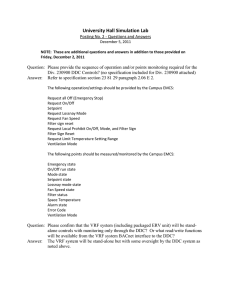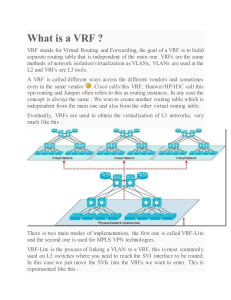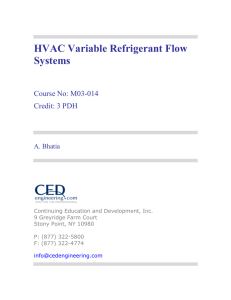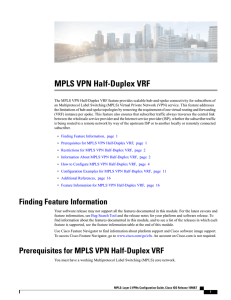Explanation 4 Variation in Response Functions
advertisement
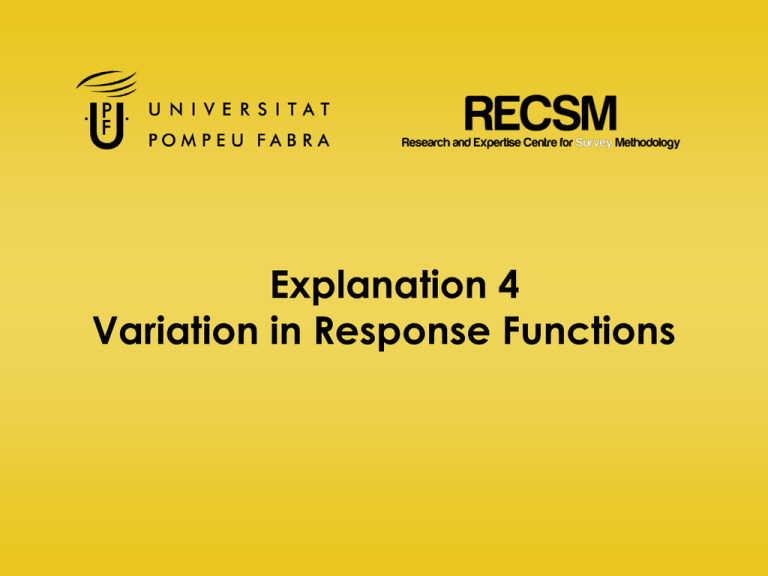
Explanation 4 Variation in Response Functions Basic assumption of Survey Research: Equality of the response function People express themselves in different ways Expression of Kissinger Translation by Israeli • Suicidal • Difficult to obtain • Impossible • Unlikely • Difficult to get • Achievable • I will see what I can do • I got this concession a long time ago The problem of Variation in Response Function (VRF) • Large differences in the way the respondents express themselves • Differences eventhough they have the same opinion • The answers don´t indicate the same opinion • These effects are systematic • The consequence of VRF is correlation between items eventough the respondents have the same opinions Can this be observed? • How qualified is a person for his job if (s)he has x years experience where x = 1,2,3,6,10,15,20 Evaluation of sizes of squares Judgment of length of lines in numbers at two occasions by 9 persons Do the coefficients have substantive importance? • In substantive judgments the slope can indicate How the respondents judges different objects • We ask people to evaluate How serious is the polution of x square meters of soil? How serious is the dealth of x birds by polution ? How large is the number x x has different but the same values in all three experiments All judgments have been expressed in length of lines The meaning of the regression coefficients We also asked • How threatening 12 environmental catastrophies are? (4 categories) The items form a Mokken scale • What is the most serious problem nowadays? We use the rank number of enviromental problems as an indicator of environmental conscienceness. The correlations of the slope coefficients with the other scale scores Conclusion • VRF has been observed in very simple judgments tasks • So it is very likely that it also occurs in more difficult judgments tasks like attitude scales • There it is difficult to show because difference of opinion and difference in response function can normally not be separated Correction for VRF • If this is the situation the respondents differ in • Individual intercept and slope • Individual means and standard deviation Experiment • How threatening are the following phenomena for the eviroment ? The observed corrections Correction for the individual standard deviations Correction for individual Means and standard deviations What to do? • Correction for the standard deviations leads to very high correlations between the items • Correction for the means and the standard deviations leads to very minimal correlations between the items • Correction can take away a part of the difference in opinion or leave some difference because of VRF Alternative: Prevent VRF using fixed reference points This means that we expect different coefficients between the respondents for instructions without a fixed reference point or one fixed reference point but not if two fixed reference points are specified The results of the test Formulation of ESS questions with fixed reference points There is only one linear response function possible but people can express different opinions Response 10 0 No trust at all resp1 resp2 resp3 Complete trust Opinion Conclusions • VRF is an alternative explanation for simplex type correlation matrices for attitude items • Corrections for VRF seems not possible after the data are collected because one can also take away a part of the difference in opinions between people • One can better prevent VRF by use of fixed reference points on the scales www.upf.edu/survey recsm@upf.edu


